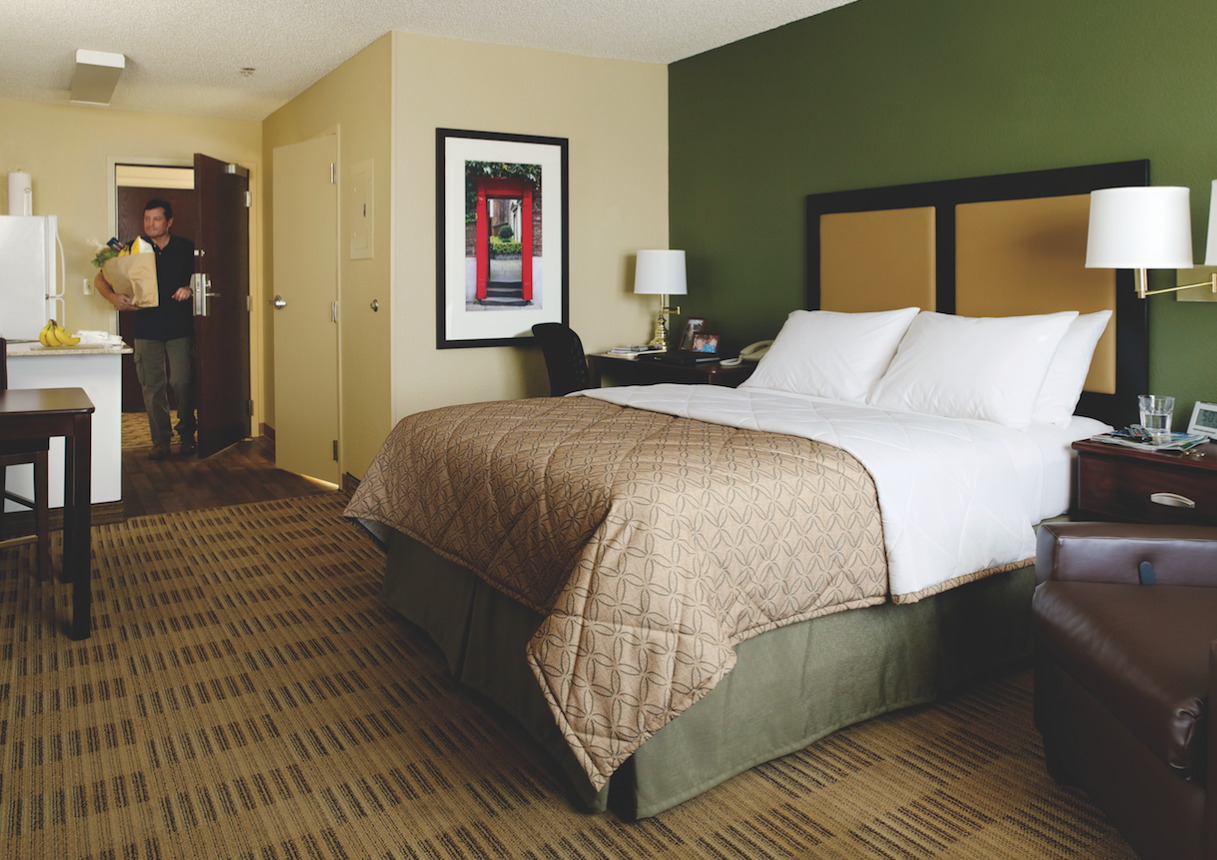While big brands and developers fret over their next boutique lifestyle hotel concept, the unassuming extended-stay segment continues to thrive. Though the extended-stay hotel makes up only 8 percent of total rooms supply in the U.S., this segment has shown robust resiliency through nearly all stages of an industry cycle, and has been the largest-growing segment in hospitality for almost 20 years.
Ron Burgett, EVP franchise operations and development at WoodSpring Suites, said this consistent success stems from extended-stay’s ability to, as he puts it, “move up and down the food chain” as a market evolves. While the average length of stay in this segment ranges from five to 25 nights at a time, these hotels also manage to pull in respectable transient business, giving them flexibility depending on market conditions.
“When times are tough, people can actually move into extended-stay hotels,” Burgett said. “They don’t have to pay for cable or other amenities, they have access to laundry facilities and it's a good short-term housing solution for three to four months. When the economy improves, the hotels then cater to more workers. When you see cranes, nearby extended-stay hotels are full.”
Mark Skinner, partner at the Highland Group, said extended-stay hotels have the benefit of being able to discount long-term rates during a downturn, pursuing both their target demographic and higher-paying transient guests. Skinner said the same attributes that draw long-term guests to these properties—more space, stripped-down menu of amenities and a kitchen in the guestroom, among others—also appeal to a specific subset of transient guests, giving extended-stay legs.
Skinner’s biggest concern for the segment comes not from Airbnb but from the forecasted 7-percent to 8-percent supply increase taking place in 2017. It’s a development spurt that could end up hurting markets like Tulsa, Okla.; Pittsburgh; Austin, Texas; Oklahoma City; and Houston. On top of this, Skinner said Airbnb is a good thing for the segment.
“Disruptors are a good thing,” Skinner said. “Airbnb exploited a niche in the market, and have they taken business away from extended-stay? Yes, but nobody knows how much and more people are staying at extended-stay hotels than ever before.”

Shaking Things Up
One disruptor appearing from within is Starwood Capital’s recent foray into the extended-stay segment with Uptown Suites, an upscale economy offering that Skinner said is necessary for the segment to grow.
“Uptown Suites is in the upper-economy segment because there has been very little new construction there for many years,” Skinner said. “This is a new product that is fresh, and right now there is a market for it.”
Skinner may be excited about Starwood Capital’s newest project, but it’s easy for many in the industry to roll their eyes at another brand. When asked if he ever feels the pull to diversify his company’s portfolio with new brands, Ryan Rivett, CEO of My Place Hotels, said every hotel company, including his, considers it at some point to create diversification.
“I agree with that strategy, and I expect… My Place to diversify in the near term,” Rivett said. “That said, there has been less attention to detail the projects that are coming out. There needs to be more diversification in the brands we are already seeing.”

Pick Your Place
Another reason for the quiet success of extended-stay hotels stems from where they are most successful. Extended-stay hotels thrive in secondary and tertiary markets served by corporate travel.
Telecommunications companies and new construction are the two biggest drivers behind extended-stay, according to Tom Buoy, EVP marketing and revenue management at Extended Stay America. Now, faced with indefatigable metrics and a deep development pipeline from every competitor, even Extended Stay America is considering breaking out of its shell to grow. Even still, Buoy said the company’s base is keeping it honest.
“We will eventually have hotels in some urban corridors, but we see strong demand outside of that,” Buoy said. “Our customer is willing to commute farther to get a home-away-from-home experience, but as customers become more aware of the affordability in the extended-stay lodging space, you will see more supply pop up in urban areas.”
Bill Duncan, global head of all suites brands at Hilton, told HOTEL MANAGEMENT that Hilton’s all-suites category is expected to open 130 new hotels this year after just hitting its milestone of 800 hotels open worldwide. After spending 20 years in extended-stay, Duncan said the level of guest awareness of what is on offer has never been higher, and the segment is reaping the rewards.
“The biggest thing I’ve seen take place in extended-stay is pure awareness,” Duncan said. “These hotels just ramp really fast. These hotels are still doing incredibly strong occupancies, even with the supply growth we’ve seen. The upscale and midscale extended-stay segments just continue to perform.”
